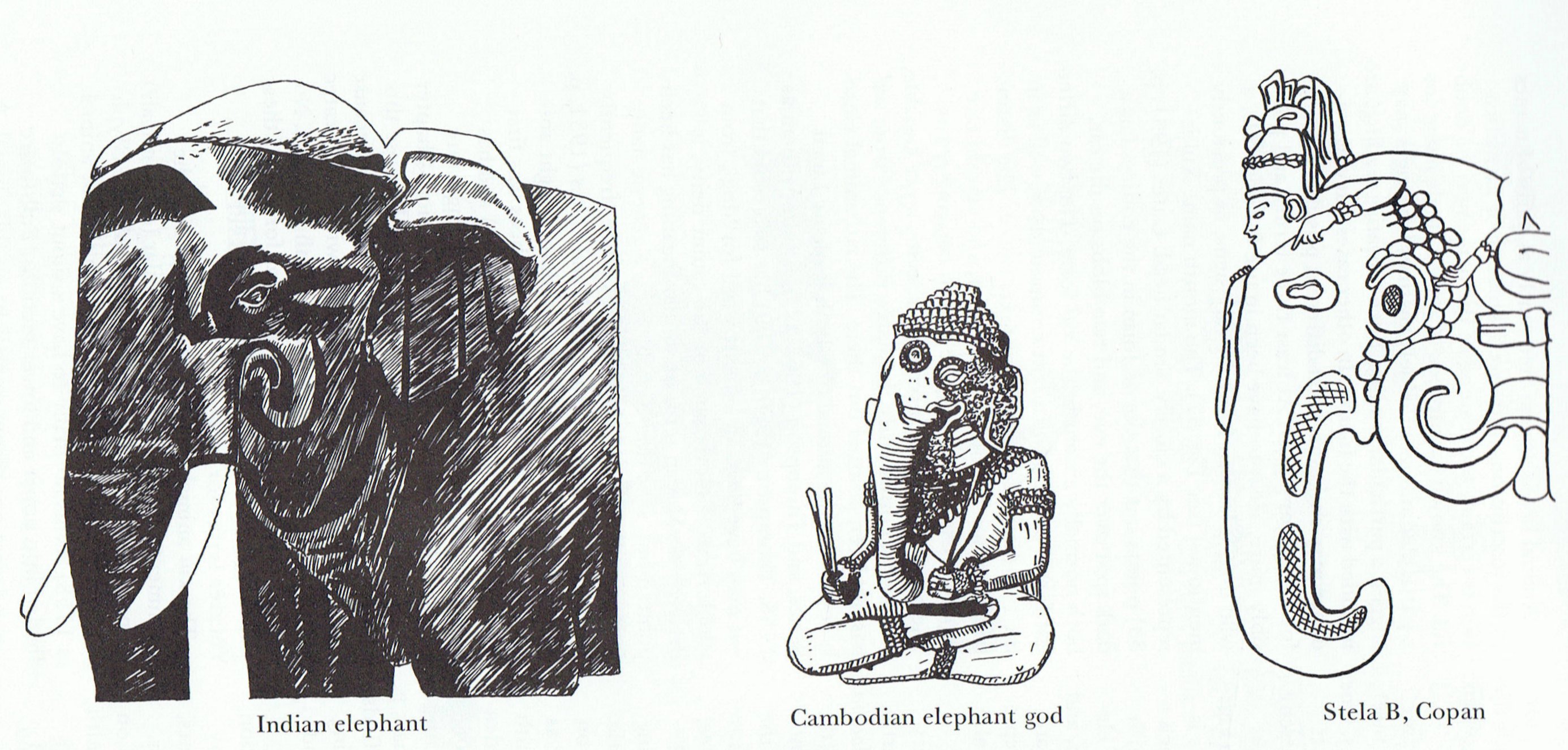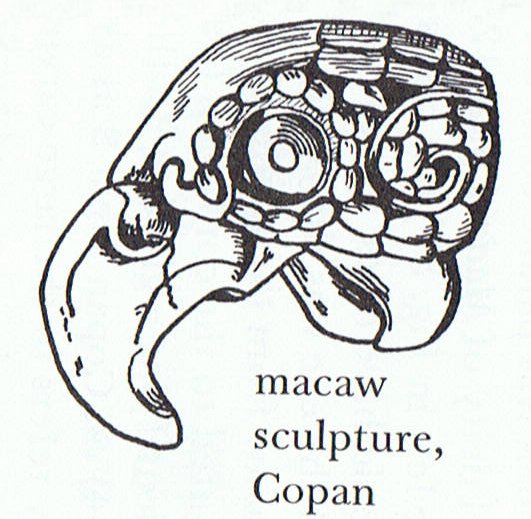|
TRANSLATIONS
Maybe it will be more easy to translate the rongorongo texts into Maya texts than into English? I thought I would find signs of a turtle at the end of the Maya year, and of course it must be in the Kayab month, I thought, because the glyph depicted a typical turtle head adorned with a quincunx sign. Which makes sense because the turtle is in the center where the 5 otters are trying to steal fish from the barbecue: In Kelley I then read about another explanation which had been suggested, that it was the head of an elephant!  "One of the liveliest controversies arose when G. Elliott Smith (1924) declared that some ... representations ... depicted elephants ... To back up his position, Elliott Smith pointed out that some Indian representations of elephants show an unrealistic spiral near the mouth, and others show a circle around the eye. Both traits are associated in the Maya area on such a disputed representation as that from Stela B, Copan, but both also appear on unmistakable macaws." There are always three possibilities, my dear Jacobowsky. Turtle, elephant, and macaw. We can conclude that once again it is a mixed beast. "As if a three-way argument over identification as macaws, turtles, or elephants were not ridiculous enough, it has also been suggested that the animal shown is a tapir. No competent professional has taken the latter opinion seriously, but it still finds occasional supporters among those who are unwilling to believe in trans-Pacific trading of elephant art and yet cannot quite believe Stela B shows macaws. Elliott Smith suggested that a conventionalization first applied to elephants was shifted to macaws by Mayan artists copying art objects showing elephants, with which they were, even in his view, unfamiliar. In order to get into my head the possibility of Kayab depicting a macaw (I still see a turtle and no elephant) this picture helps (but not much):  At any rate I see a true sun eye connected by way of a spiral to a black 'eye'. There are 12 'stones' around the true sun eye. The 'face' of the 'macaw' is looking straight ahead, not to the left, and his beak is at bottom right. The at first view identified beak at bottom left is not his beak but his neck. It reminds me of the Easter Island art objects, where you can see one 'person' from one angle and another from another angle, for instance the so-called bird-man sculpture:   The trunk of the elephant became the neck of a macaw. I think Elliott was right. Given an elephant picture, the creative Mayan artist saw the opposite of the 'leaf-snout' of Zotz the bat. In other words, the opposite of the very long nose (he ihu roroa) of the evil xoc:  Zotz comes immediately before the opening which lets sun in (Tama), while Kayab comes after the opening through which sun leaves (Te Pu Mahore):
Te Pu Mahore is not the 1st kuhane station, but the 2nd (while Tama is the 1st summer station). Certainly there must be some explanation for this little discrepancy, but nothing to worry about for the moment. But I have earlier deduced that Nga Kope Ririva was station number zero. ... The dream soul of Hau Maka continued her journey and went ashore on the (actual Easter) Island. The dream soul saw the fish Mahore, who was in a (water) hole to spawn (?), and she named the place 'Pu Mahore A Hau Maka O Hiva' ... Mahore is a small silver-coloured fish, surely not a symbol for the sun but suitable for the moon:
I am saying that Kayab is an impotent month, while Zotz obviously is very virile.
The turtle depicted in this Kayab glyph, though, has no sign of elephant (or macaw) impotency, it is referring to the soon necessary lighting of a new fire. Before continuing this fascinating voyage it is necessary to document a fact I just happened to notice. When I copied the Vayeb glyph from Gates, I wondered if I should copy also the sign he had in front, and decided not to incorporate it. Now I can see it is the opposite of the sign at the back of the Zotz glyph. I was wrong - it belongs to the Vayeb glyph and I should have copied it:
The 'eyes' are at the back in Zotz, but in front (we read from right to left) in Vayeb. Possibly these 'eyes' refer to the moon, because sun eyes should be in front of Zotz and at the back of Vayeb. 280 also suggests the moon. The Vayeb glyph has a slightly modified Pax sign at bottom. There are 2 white 'pillars' in Vayeb instead of the single one (between the two dark pillars) in Pax. A moon year seems to begin with Tzek and end with the 360th night. |
|||||||||||||||||||||||||||||||||||||||||||||||||||||||||||||||||||||||||||


